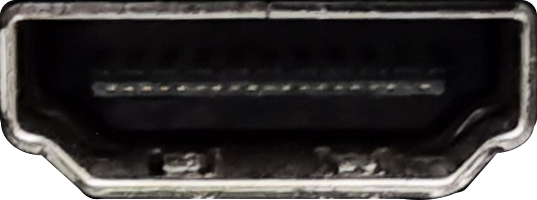What is HDMI?
HDMI (High-Definition Multimedia Interface) is a widely used port for transmitting high-quality audio and video between devices. It is commonly found on TVs, monitors, gaming consoles, and laptops.
What Is It Used For?
- Connecting TVs and monitors to computers, game consoles, or streaming devices
- Transmitting both audio and video over a single cable
- Supporting high-definition and 4K video formats
- Hooking up soundbars and AV receivers
Common Misunderstandings
- HDMI does not carry internet data (unless using HDMI Ethernet Channel, which is rare)
- Not all HDMI cables support 4K or high refresh rates. Look for "High Speed" or "Ultra High Speed" labels
- HDMI ports can come in different sizes (standard, mini, and micro)
- Adapters may be needed when connecting HDMI to other port types (like USB-C or DisplayPort)
How to Identify It
- Wide, trapezoid-shaped port
- Typically labeled as "HDMI" near the port
- Larger than USB ports
- Often found on the sides of laptops or the backs of TVs and monitors
Devices That Commonly Use HDMI
- Televisions — use HDMI ports to receive video and audio from set-top boxes, consoles, or computers
- Monitors — connect to desktops or laptops using HDMI for visual output
- Gaming consoles — output video and sound to TVs or monitors through HDMI
- Media streaming devices — plug into HDMI ports to display streaming content on TVs
- Laptops — often include HDMI ports to connect to external displays or projectors
- Projectors — receive input from computers or media devices via HDMI
- AV receivers — connect multiple HDMI sources and route them to TVs or speaker systems
- Blu-ray and DVD players — send high-definition video and audio to TVs
- Cameras and camcorders — some include HDMI outputs for live video playback or streaming
- Desktop computers — typically include HDMI for connecting to monitors or TVs



